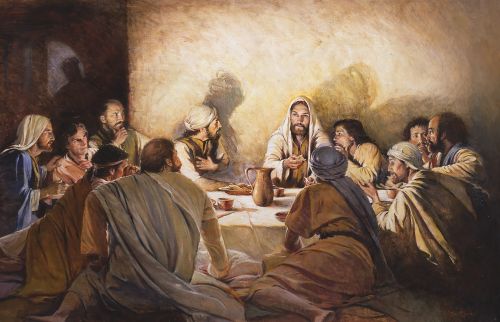Have you ever heard of “coconut Christology”? Havea, in his article “Christianity in Pacific context,” wrote that “if Jesus had grown up and lived in the Pacific, He could have added another identification of himself – I am the coconut of life.” It is because coconut is the most popular in Pacific islands, and because the full Christology can be seen in it. For instance, if the Eucharist had been instituted in the Pacific context, instead of unleavened bread and wine, Jesus could have used the coconut to represent his body which was bruised and crushed, and the juice for the blood. The image of the coconut even represents the Eucharist better than that of bread and wine because the coconut has both the drink and the food from the same fruit, like the blood and flesh from one and the same body of Christ. What do you think? Do you want to receive the Eucharist in the form of coconut?
In the mass this evening, we celebrate the institution of two sacraments: the Eucharist and the Holy Orders. I would like to invite you to especially remember bishops, priests, and deacons in your prayers. Also, I would like to share with you some essential points about the Sacrament of the Eucharist.
In every Sacrament, there is always something functioning as a sign. For example, water is the sign of baptism. Sacred Chrism is the sign of confirmation. The “coconut Christology” is just like a joke, but it helps to see the characteristics of the sign. The sign must somehow function to signify the invisible reality underneath the sacrament. In this aspect, coconut could be a perfect sign for the Eucharist. However, another important element of all sacraments is that sacraments are instituted by Christ. The second reading tells us how Jesus instituted the Eucharist. He did not take a coconut, but he took the bread and cup. This is the reason why only bread and wine are valid matters for the Eucharist.
Above all, the most important point that we have to believe and have to keep in mind is that by the consecration of the priest, Jesus is present whole and entire in each of the eucharistic species and in each of their parts. After consecration, the bread and wine are no longer bread and wine, but they are the body and blood of Christ. The appearance of bread and wine does not change, but their substances change. This kind of change is called transubstantiation. In no way, our senses can prove this reality, but only faith can. If you believe that “nothing is impossible for God,” then you will easily believe in the mystery of the Eucharist. When we believe in the true presence of Jesus in the Eucharist, we are aware of the importance of this Sacrament for our salvation. Precisely, “Holy Communion increases our union with Christ and with his Church. It preserves and renews the life of grace received at Baptism and Confirmation and makes us grow in love for our neighbor. It strengthens us in charity, wipes away venial sins and preserves us from mortal sin in the future.”
Today, the liturgy especially reminds us of the Eucharist. We are invited to cultivate our faith in the Eucharist and increase our love for this wonderful sacrament. You may not know the theological foundation of the Eucharist, or you may not understand the significance of signs, but I urge you to inscribe in your mind the most crucial belief that Jesus is truly present in the Eucharist. Then, you show your love for Jesus by attending mass and receiving his body and blood.
Brothers and sisters, come to the Eucharist for Jesus is waiting for you!

